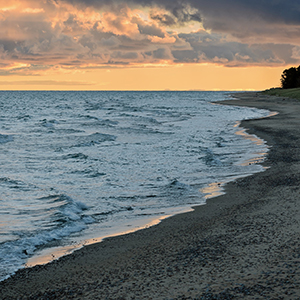The increasing spread of the European barbel in the Italian large lowland rivers is threatening the native species

Submitted: 28 March 2023
Accepted: 4 September 2023
Published: 21 September 2023
Accepted: 4 September 2023
Abstract Views: 728
PDF: 203
Supplementary: 33
HTML: 6
Supplementary: 33
HTML: 6
Publisher's note
All claims expressed in this article are solely those of the authors and do not necessarily represent those of their affiliated organizations, or those of the publisher, the editors and the reviewers. Any product that may be evaluated in this article or claim that may be made by its manufacturer is not guaranteed or endorsed by the publisher.
All claims expressed in this article are solely those of the authors and do not necessarily represent those of their affiliated organizations, or those of the publisher, the editors and the reviewers. Any product that may be evaluated in this article or claim that may be made by its manufacturer is not guaranteed or endorsed by the publisher.
Similar Articles
- Karolina Grabowska, Aleksandra Bukowska, Tomasz Kaliński, Bartosz Kiersztyn, Waldemar Siuda, Ryszard J. Chróst, Presence and identification of Legionella and Aeromonas spp. in the Great Masurian Lakes system in the context of eutrophication , Journal of Limnology: Vol. 79 No. 1 (2020)
- Rachel C. HELLIWELL, Martin KERNAN, Modelling hydrochemical and ecological trends in acid sensitive surface waters in the Scottish Highlands , Journal of Limnology: Vol. 63 No. 1 (2004)
- Giuseppe Morabito, Nico Salmaso, Delio Ruggiu, Phytoplankton association patterns in the deep southern subalpine lakes (Part 1) , Journal of Limnology: Vol. 61 No. 1 (2002)
- Cristiana CALLIERI, Roberto BERTONI, Organic carbon and microbial food web assemblages in an oligotrophic alpine lake , Journal of Limnology: Vol. 58 No. 2 (1999)
- David A. Salas de León, Javier Alcocer, Vilma Ardiles Gloria, Benjamín Quiroz-Martínez, Estimation of the eddy diffusivity coefficient in a warm monomictic tropical Lake , Journal of Limnology: Vol. 75 No. s1 (2016): Proceedings of the 6th National Congress of Limnology
- Ulrike OBERTEGGER, Marina MANCA, Response of rotifer functional groups to changing trophic state and crustacean community , Journal of Limnology: Vol. 70 No. 2 (2011)
- Simone Guareschi, Alex Laini, Maria M. Sánchez-Montoya, How do low-abundance taxa affect river biomonitoring? Exploring the response of different macroinvertebrate-based indices , Journal of Limnology: Vol. 76 No. s1 (2017): Aquatic biomonitoring: Lessons from the past, challenges for the future
- Gisela B. FRITZ, Ralph O. SCHILL, Martin PFANNKUCHEN, Franz BRÜMMER, The freshwater jellyfish Craspedacusta sowerbii Lankester, 1880 (Limnomedusa: Olindiidae) in Germany, with a brief note on its nomenclature , Journal of Limnology: Vol. 66 No. 1 (2007)
- Oscar RAVERA, Pier Renato TRINCHERINI, Gian Maria BEONE, Bruno MAIOLINI, The trend from 1934 to 2001 of metal concentrations in bivalve shells (Unio pictorum) from two small lakes: Lake Levico and Lake Caldonazzo (Trento Province, Northern Italy) , Journal of Limnology: Vol. 64 No. 2 (2005)
- Francine FORREST, Euan D. REAVIE, John P. SMOL, Comparing limnological changes associated with 19th century canal construction and other catchment disturbances in four lakes within the Rideau Canal system, Ontario, Canada , Journal of Limnology: Vol. 61 No. 2 (2002)
<< < 81 82 83 84 85 86 87 > >>
You may also start an advanced similarity search for this article.

 https://doi.org/10.4081/jlimnol.2022.2136
https://doi.org/10.4081/jlimnol.2022.2136






